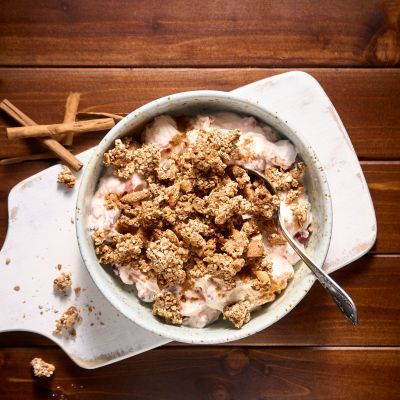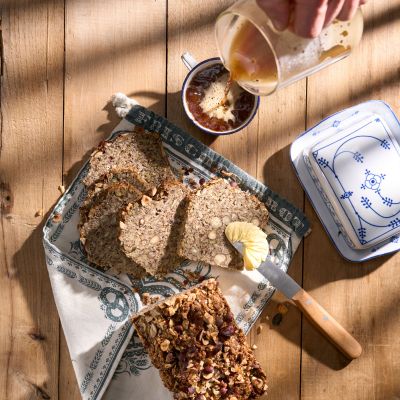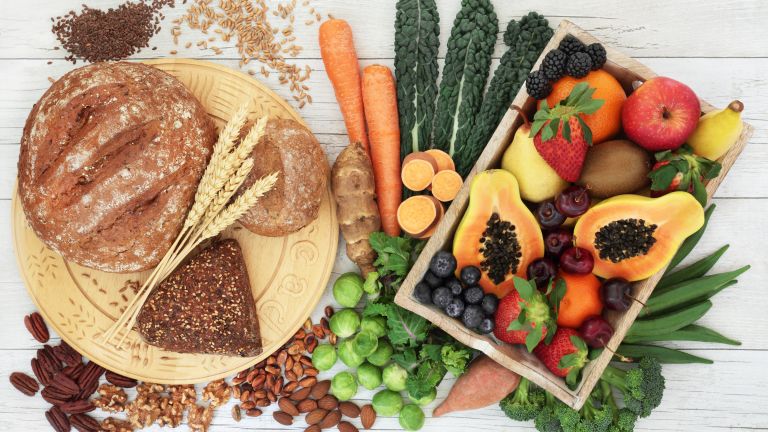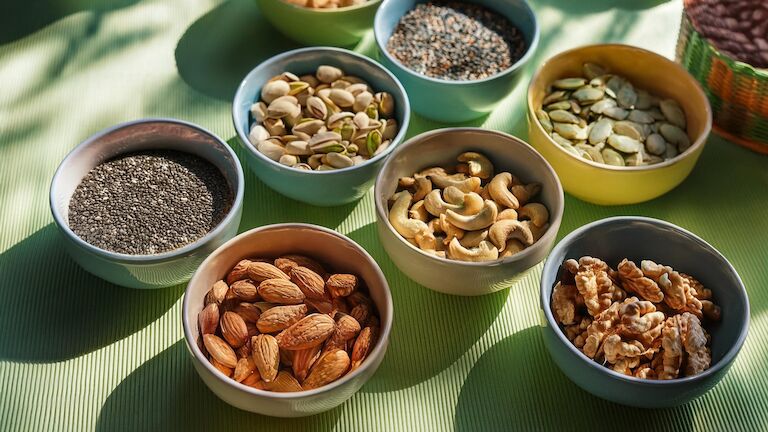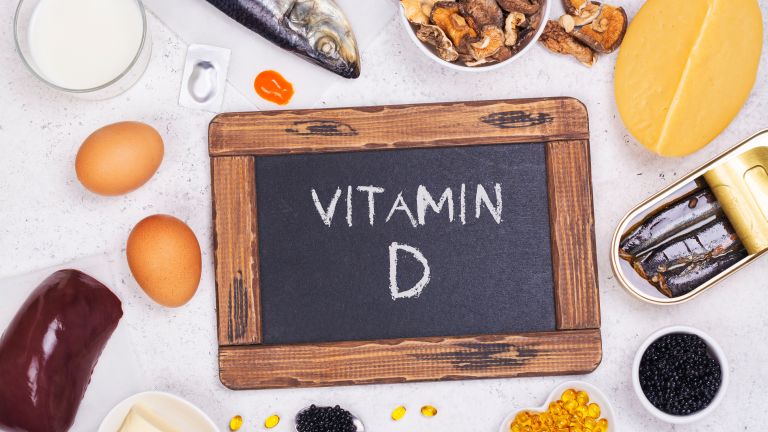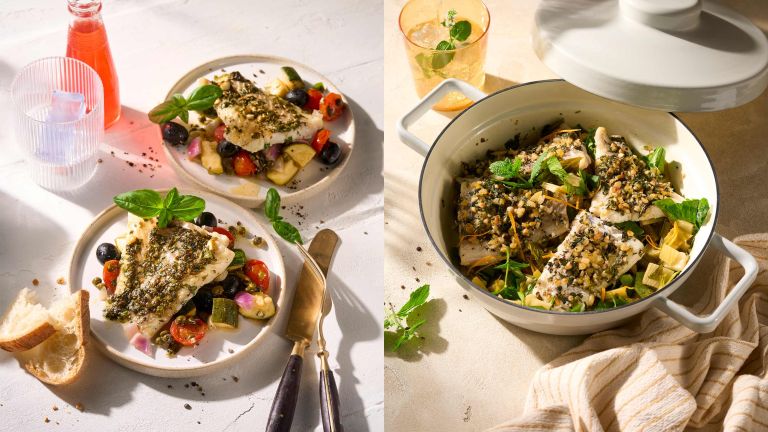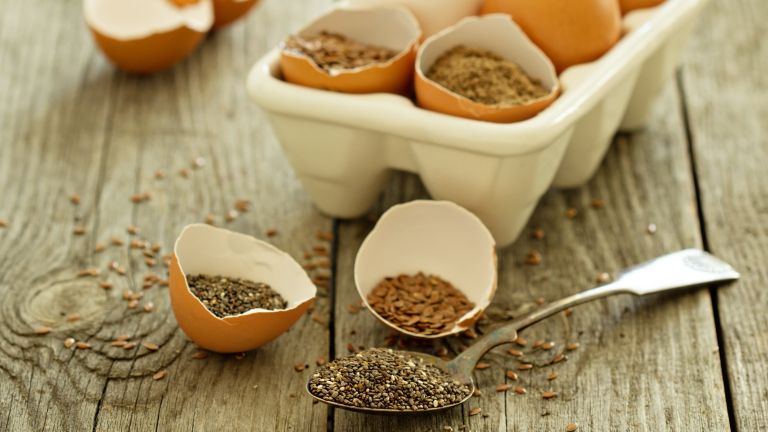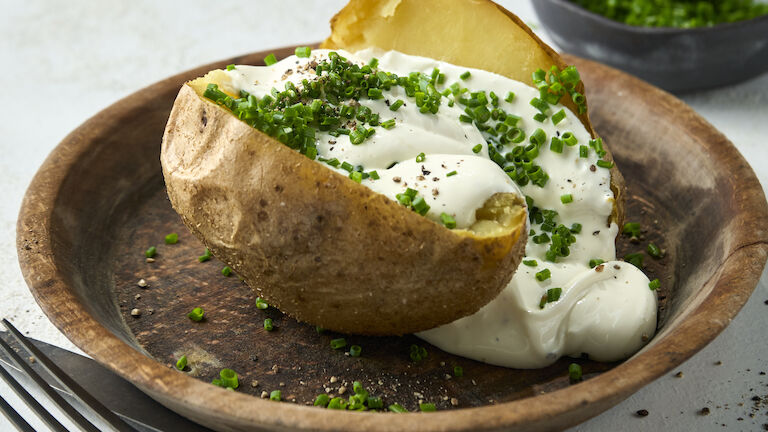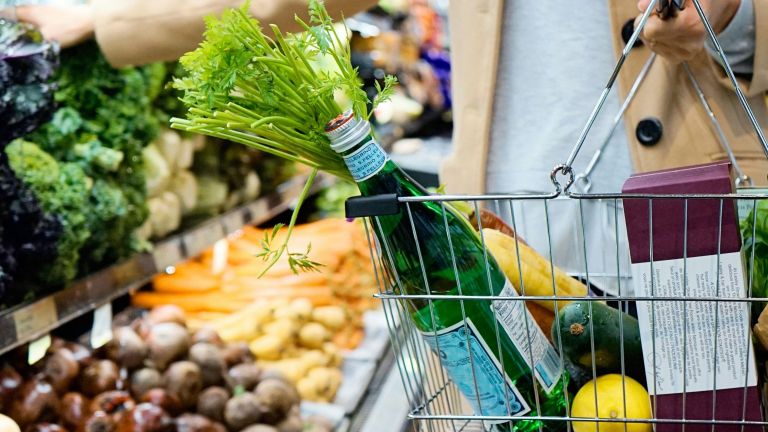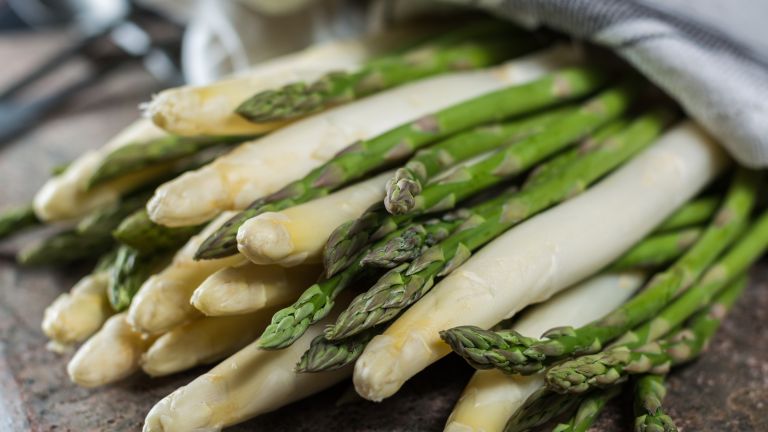Fat makes you fit
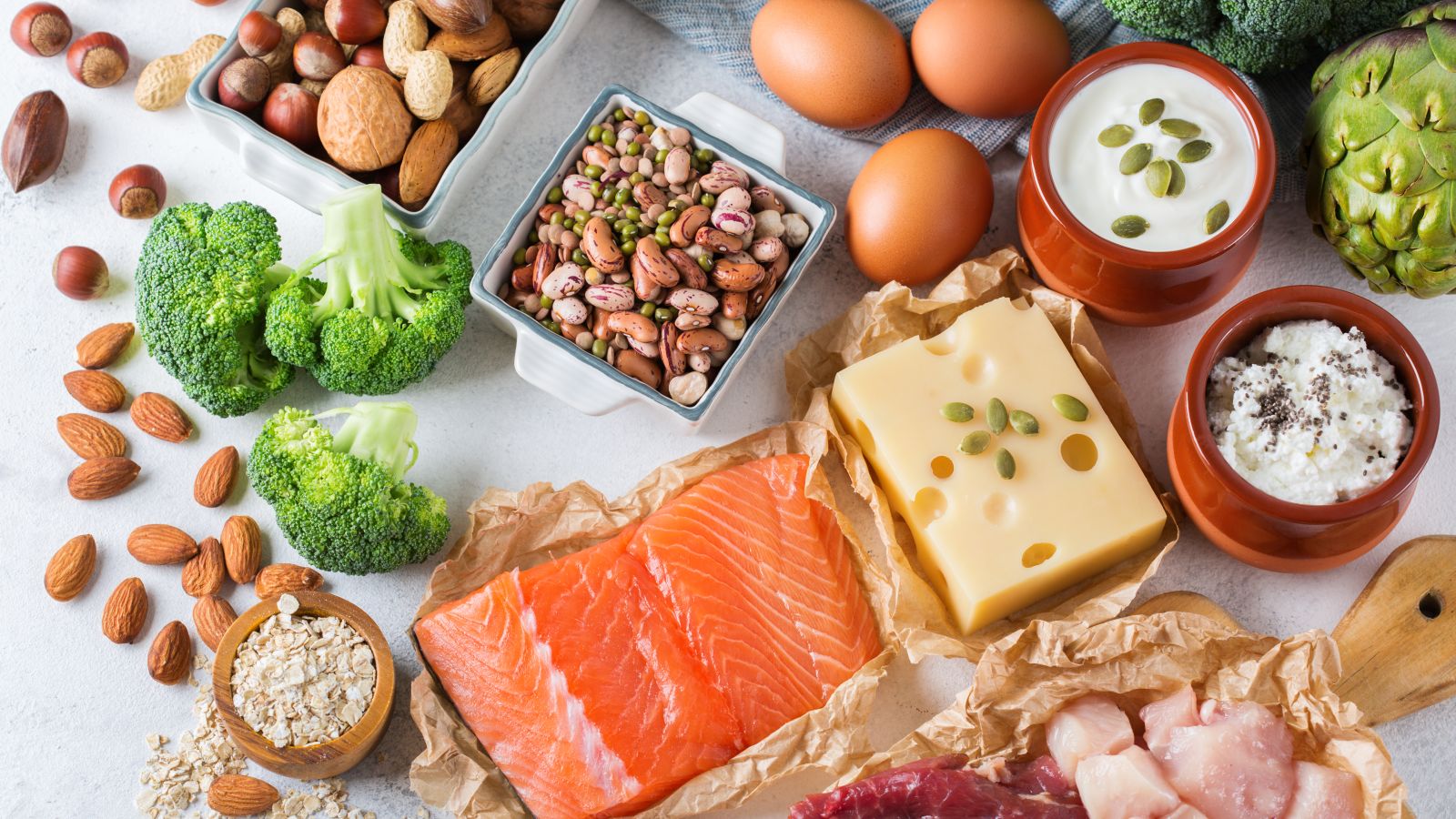
Stop fat shaming! In a world dominated by low-fat diets and low-calorie foods, saying “fat makes you fit” at first seems contradictory. But numerous studies have demonstrated that fat has a positive impact on our health. It just depends on the type of fat. Below, we explain which fats are essential to the body and which should be avoided.
Overview
- The role fat plays in our diet
- What types of fat are there?
- The role of cholesterol and triglycerides in fat intake
- Which fats are bad?
- Which fats are good?
- Everyday advice
- Our favourite recipes with healthy fats for any occasion
Butter, cream, olive oil... in Germany, we love using fat as a flavour enhancer. This is also apparent when considering current consumption levels. According to data from the German National Nutrition Survey II, the recommended maximum of 30% for fat as part of the total energy intake is exceeded.
In Germany, fat accounts for an average of 35%. Notably, the fatty acid composition is unsatisfactory. The amount of saturated fatty acids consumed, at a proportion of about 16%, is significantly higher than the recommended level of 7% to 10%. At an average of 5%, the proportion of polyunsaturated fatty acids, which should ideally make up 10% of the total energy intake, is insufficient. (1)
The role fat plays in our diet
Nutritional fat not only delivers delicious flavours, but also plays a vital role in the body. With nine calories per gram, fat is an important source of energy, especially when it comes to getting a lot of energy from little food. By comparison, carbohydrates and proteins each contain four calories per gram.
In addition, dietary fat delivers essential fatty acids, which are needed to protect our cells, regulate inflammation and ensure that our nervous system works well. Since the body cannot produce these fatty acids itself, this supply of dietary fat is vital.
It is essential to consume an adequate amount of fat, as it is a carrier of fat-soluble vitamins (A, D, E and K). This is the only way in which vitamins can be readily absorbed and utilised by the body.
Fat also serves the body as a cushion and insulator. It supports important organs, such as the kidneys, while protecting tissues such as the eyeballs and the soles of the feet. As a constituent of subcutaneous fat, it also protects us from the cold.
The German Nutrition Society (DGE) recommends that adults get a maximum of 30% of their nutritional energy from fat. This equates to between 60 and 80 g of fat per day in less active adults. In those who are more physically active, the recommendation increases to 35%. (2)
What types of fat are there?
Fatty acids can be divided according to their chain length and degree of saturation into:
- saturated fatty acids
- monounsaturated fatty acids
- polyunsaturated fatty acids
We should be mindful of linoleic acid (omega-6 fatty acid) and α-linolenic acid (omega-3 fatty acid), as the body cannot produce these polyunsaturated fatty acids itself and they must be ingested with food. (3)
The recommended amounts relative to the total energy supply are:
- Saturated fatty acids: ≤ 10%
- Monounsaturated fatty acids: ≤ 13%
- Polyunsaturated fatty acids: 7% to max. 10%*
- Essential omega-6 fatty acids: 2.5%
- Essential omega-3 fatty acids: 0.5%
The optimal amounts are:
- Saturated to unsaturated fatty acids: ≤ 1:2
- Omega-6 to omega-3 fatty acids: 5:1
Good to know! Some popular oils have a very poor omega-6 to omega-3 ratio. Sunflower oil has a ratio of 1:120, for example, whereas in rapeseed oil it is 1:2. So rapeseed oil would be the better choice.
*If saturated fatty acids account for more than 10% of the total energy intake. (4)
The role of cholesterol and triglycerides
Fats enter the bloodstream from ingested food and are then transported to where they are needed in the body. For example, fat is transported into our muscles to generate energy and is stored in the fatty tissue. Cholesterol and triglycerides are the blood lipids (fats) which are most relevant.
Cholesterol comes in two forms: good HDL cholesterol and bad LDL cholesterol. Together they make up total cholesterol. If your doctor tells you your cholesterol levels, it is worth asking about the type.
HDL ensures that excess cholesterol is removed from the tissue and forwarded to the liver, where it undergoes further processing. HDL therefore offers a desirable “tidying up” effect. Regular exercise can increase HDL levels.
LDL is responsible for supplying the cells in the body with cholesterol. However, if their needs are met, the excess LDL remains in the blood, leading to high LDL levels which increase the risk of cardiovascular disease.
If increased, triglycerides are also a risk factor for cardiovascular disease.
We should all be mindful of LDL and triglyceride values due to the risk factors if they are too high. The good news is that a balanced diet and exercise can help to lower their levels. (5)
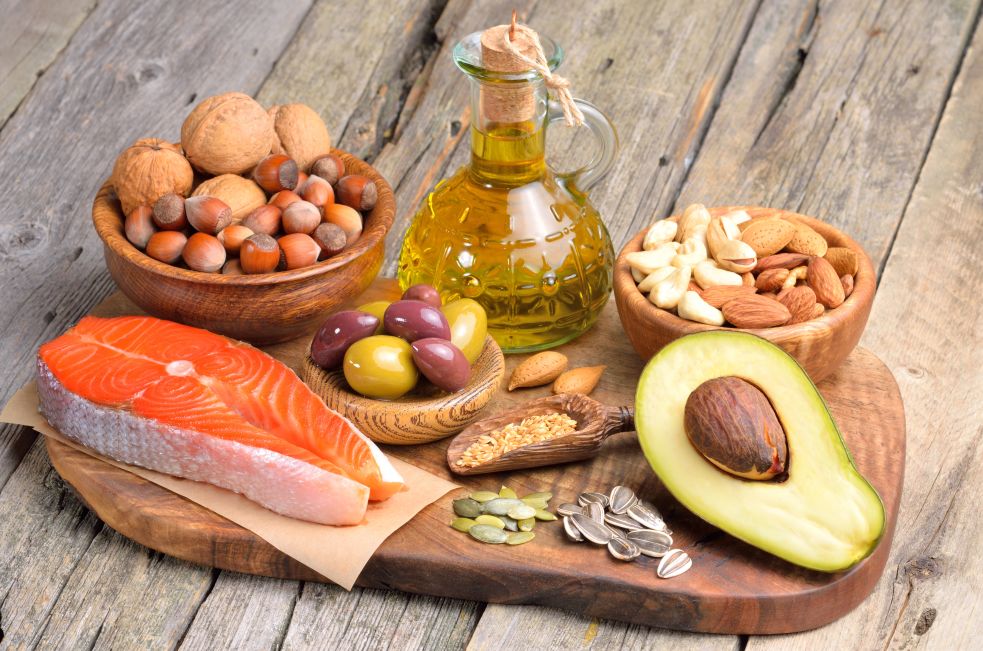
Which fats are bad?
Saturated fatty acids increase LDL and triglyceride levels. Excessive intake will have a negative effect on our health, especially on the cardiovascular system. They are mainly found in meat and dairy products, and in many processed foods. (5) These include:
- meat and sausage
- eggs
- high-fat dairy products such as butter, cream, sour cream, cream fraîche and cheese
- sweet and salty snacks such as chocolate, pastries, cakes and crisps
- ready meals and processed foods
Trans fatty acids also have a negative impact on our health. Consuming too many causes the bad LDL cholesterol levels in our blood to increase and the good HDL cholesterol to decrease. In natural form, trans fatty acids are mainly found in dairy and meat products (beef and lamb).
They are naturally produced by microorganisms in the rumen of ruminants. In addition, partial hardening of unsaturated fatty acids in vegetable oils leads to the formation of trans fatty acids. They are therefore found in many fast-food products, baked products, snacks, deep-fried foods and spreads. Trans fatty acids should not make up more than 1% of our total energy intake. (6)
Which fats are good?
Unsaturated fatty acids, which are found in many plant-based foods, positively influence our blood lipid levels and can thus reduce the risk of cardiovascular disease. They not only provide a flexible and permeable cell membrane, but some fatty acids even have an anti-inflammatory effect. Anyone who consumes more unsaturated fatty acids and at the same time fewer saturated fatty acids can enjoy positive health effects. (5)
Good sources of unsaturated fatty acids are:
- nuts and seeds
- vegetable oils such as olive oil, rapeseed oil and linseed oil
- avocado
- oily saltwater fish such as salmon, mackerel and herring
Omega-3 fatty acids are particularly important when it comes to our health. Tri-unsaturated α-linolenic acid (omega-3) competes with di-unsaturated linolenic acid (omega-6) for the same enzyme system in the body. They are thus transformed into longer-chain, hormone-like substances called eicosanoids. The eicosanoids produced from α-linolenic acid (omega-3) have an anti-inflammatory effect, while those produced from linolenic acid (omega-6) have an pro-inflammatory effect.
Only a maximum of 10% of the α-linolenic acid (omega-3) is converted into longer-chain fatty acids, and even less in the presence of linoleic acid (omega-6). The additional intake of the longer-chain omega-3 fatty acids eicosapentaenoic acid (EPA) and docosahexaenoic acid (DHA), which occurs mainly in oily sea fish, is therefore advisable.
Good to know! Linoleic acid (omega-6) is nevertheless essential, for example for our skin. We therefore need it in our diets, though it depends on the proportions. The recommended ratio of omega-6 to omega-3 is a maximum of 5:1. The average among the German population is between 10:1 and 15:1. (4)
Everyday advice
Good fats are part of a healthy and balanced diet. To increase your intake of good saturated fatty acids and decrease the saturated fatty acids, the following advice may help:
- Vegetable fats should be preferred over animal fats. Meat and sausage, but also high-fat dairy products such as cheese, cream and sour cream, all contain bad saturated fats.
- Eat a handful of nuts and seeds every day. They are not only good as a snack, but also great as a topping for savoury salads and sweet smoothies or yoghurt bowls.
- Eat oily saltwater fish (such as salmon, tuna, herring or mackerel) once or twice a week to ensure you get enough of the long-chain omega-3 fatty acids EPA and DHA. Keep finished products, baked products, fried foods and snacks such as crisps to a minimum to avoid bad trans fats.
- Use butter and margarine sparingly. Margarine, especially from rapeseed or soya oil, is a better choice, because it is richer in unsaturated fatty acids. Butter, on the other hand, contains more saturated fatty acids. As the fatty acid content of margarine can vary, it is worth checking the nutritional label. The proportion of unsaturated fatty acids should at best be high and that of saturated fatty acids low.
- The right oil for the right situation: Cold-pressed oils are suitable for cold dishes, refined oils for both hot and cold. Heat resistance is the deciding factor here.
- Use olive oil and rapeseed oil for cooking as they have a good fatty acid composition. Virgin olive oil can easily be used at temperatures up to 180°C. Classic (not cold-pressed) rapeseed oil is good up to 210°C. This is more than enough for most cooking requirements.
- For frying at very high temperatures, use fats such as clarified butter or coconut oil. Although they are rich in bad unsaturated fats, they are highly resistant to heat. If fats with lower heat resistance are heated too high, harmful and sometimes carcinogenic substances may be released.
- Für das Braten bei sehr hohen Temperaturen Fette wie Butterschmalz oder Kokosöl verwenden. Sie sind zwar reich an ungünstigen ungesättigten Fettsäuren, aber haben gerade deshalb eine hohe Hitzebeständigkeit. Werden Fette mit geringerer Hitzebeständigkeit zu hoch erhitzt, so können gesundheitsschädliche und zum Teil krebserregende Stoffe entstehen.
My advice: If you are vegan or vegetarian or simply don’t like fish, I recommend that you pay special attention to your omega-3 intake. Good sources are seeds and nuts (e.g. linseed, chia seeds, walnuts) or oils such as rapeseed oil, walnut oil and linseed oil. However, they only contain α-linolenic acid, i.e. the precursor of EPA and DHA. Since the conversion rate fluctuates, a medical assessment may be wise. In addition, microalgae and algae oil, which themselves contain EPA and DHA, can supply us directly with the important omega-3 fatty acids.
Our favourite recipes with healthy fats
Sugar-free granola with cinnamon >>
This is not only excellent as a yoghurt topping, but the nuts mean it is especially rich in good unsaturated fatty acids.
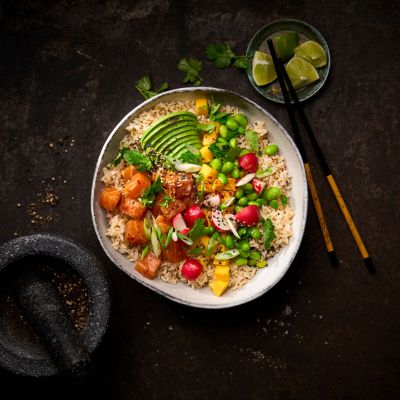
Poké bowl with salmon, mango, avocado & edamame >>
This offers a tasty combination of both good unsaturated fatty acids from avocado and essential omega-3 fatty acids from salmon. A perfect match!
Gluten-free bread with hazelnuts >>
Bread and healthy fats? This recipe shows how it goes. The extra portion of good fats comes from the large amount of nuts and seeds.
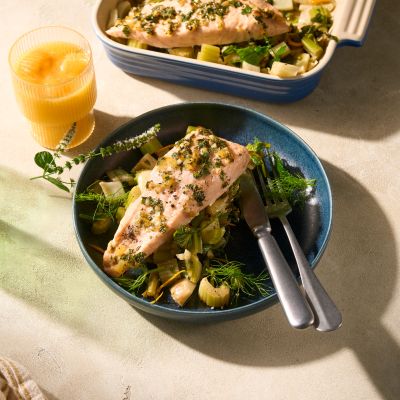
Oven-baked salmon with fennel & celery >>
Oven-baked fish is a classic that delivers the essential omega-3 fatty acids EPA and DHA.
Sources:
(1) BMELV: "Nationale Verzehrsstudie II: Wie sich Verbraucherinnen und Verbraucher in Deutschland ernähren" ("National Nutrition Survey II: How consumers in Germany eat", March 2024)
(2) DGE Blog: "Fett in der Ernährung: Fakten rund um die Bedeutung von Fett für den Körper" (Deutsche Gesellschaft für Ernährung, 2023)
(3) DGE: "REFERENZWERT. Fett, essenzielle Fettsäuren” ("REFERENCE VALUE. Fat, essential fatty acids")
(4) "Fette und Öle: Grundlagenwissen und praktische Verwendung" by Bertrand Matthäus ("Fat in the diet: Facts about the importance of fat for the body", Ernährungs Umschau 3/2012)
(5) BMEL: "Gutes Essen, No. 5" ("Good Food, No. 5", April 2021)
(6) Bundesinstitut für Risikobewertung (BfR): "Gesundheitliche Bewertung von Fettsäuren" ("Health assessment of fatty acids")
Images: © Shutterstock.com, Robert Bosch Hausgeräte GmbH
